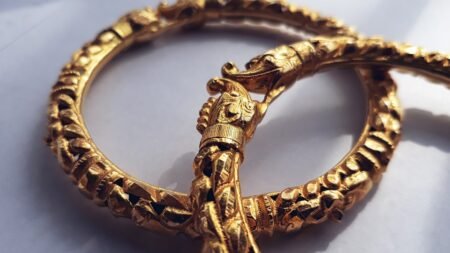
The Science Behind Necklace Design: How Materials and Shapes Impact Perception
Necklaces have been worn by humans for thousands of years, serving as both decorative accessories and symbols of social status. But have you ever stopped to ponder the science behind necklace design? The materials used and the shape of a necklace can have a significant impact on how it is perceived by others. In this article, we will explore the fascinating world of necklace design, delving into the science behind materials and shapes and how they influence our perception.
Materials: The Key to Visual Appeal
When it comes to necklace design, the choice of materials plays a crucial role in determining its visual appeal. Different materials can evoke different emotions and convey varying messages. For example, a necklace made from precious metals such as gold or silver can be seen as luxurious and elegant, while a necklace made from beads or natural materials like wood or stone may convey a more bohemian or earthy vibe.
The Science of Color
Color is another important factor in necklace design. Each color has its own psychological associations and can evoke different emotional responses. Bright, vibrant colors like red or yellow can create a sense of energy and playfulness, while cooler tones like blue or green may elicit feelings of calmness and tranquility.
Shapes: Aesthetics and Symbolism
The shape of a necklace can also greatly impact its perception. Different shapes can have different aesthetic qualities and symbolic meanings. For example, a necklace with a geometric shape like a circle or a triangle can create a sense of symmetry and order, while a necklace with a more organic, free-flowing shape can evoke a sense of movement and natural beauty.
The Power of Symmetry
Symmetry is a fundamental principle in visual design and can greatly enhance the appeal of a necklace. Humans are naturally drawn to symmetry, as it is associated with beauty and balance. A necklace with symmetrical elements can create a sense of harmony and visual appeal.
The Role of Proportions
Proportions are another important aspect of necklace design. The size and placement of different elements can greatly impact the overall aesthetic. For example, a necklace with a large central pendant may draw more attention to the neckline, while a necklace with evenly distributed smaller charms or beads can create a more balanced and delicate look.
Perception and Cultural Influence
It is worth noting that the perception of necklace design can also be influenced by cultural factors. Different cultures may have different preferences when it comes to materials, colors, and shapes. For example, in some cultures, gold is highly valued and associated with wealth and prosperity, while in others, silver or other materials may hold greater significance.
In Conclusion
The science behind necklace design is a fascinating field that combines art and psychology. The choice of materials and shapes can greatly impact the visual appeal and perception of a necklace. From the psychological associations of different colors to the aesthetic qualities of various shapes, every element of necklace design is carefully considered to create a desired effect. So the next time you admire a necklace, take a moment to appreciate the science behind its design.












